You’ve spent hours, maybe even days, getting your wall tiles perfectly level and spaced. The surface is flawless. But then you look at the outside corners, and your heart sinks a little. Those raw, exposed tile edges look unfinished, sharp, and vulnerable. It’s the one detail that separates a good DIY job from a truly professional one.
Here’s how you give those corners a clean, durable, and polished finish using the right corner trim.
The Direct Answer: To install corner trim for wall tiles, first choose a trim profile (like L-shaped or round) and material (metal or plastic) that suits your design. Cut the trim to length, often with a 45-degree miter cut for corners. Apply tile adhesive to the wall, press the trim’s perforated flange into the adhesive, and then set your tiles flush against the trim’s edge for a seamless finish.
This guide is your complete roadmap. We're moving beyond basic instructions to share the kind of insights you'd get from a seasoned contractor. You'll learn not just the "how" but the "why" behind each step.
We'll cover choosing materials, the complete installation sequence, and the pro-level tips that make all the difference. Let’s start by understanding what tile corner trim actually does—and why it’s so critical for a long-lasting, beautiful finish.
What Is Corner Trim for Wall Tiles?
The Question: "I see these metal or plastic strips on tile corners... what are they actually for, and do I really need them?"
The Promise: This section defines tile corner trim, explaining its crucial dual role in protecting your tile work and elevating its final appearance.
Tile corner trim is a profile strip designed to cover the unglazed, raw edge of a tile where it meets an outside corner. Think of it as the picture frame for your tile installation. Just as a frame protects and defines a piece of art, tile trim protects the vulnerable edge of your tile and provides a clean, deliberate visual stop.
Its function is twofold:
- Protection: The edge of a cut tile is its weakest point. It's brittle and susceptible to chipping or cracking from everyday bumps. In wet areas like showers or kitchen backsplashes, a sealed trim edge also provides an extra barrier against water seeping behind the tile, which can prevent much bigger problems down the road.
- Aesthetics: A professionally finished corner looks intentional. The trim creates a crisp, straight line that hides imperfections in the tile cut and gives the entire project a high-end, polished look. It’s a small detail that has a massive impact on the final result.
Is Corner Trim the Same as an Edging Strip?
While the terms are often used interchangeably, there's a subtle difference. An edging strip is typically used to finish the last row of tiles on a wall that doesn't terminate at a corner—like the top of a half-tiled wall. A corner trim is specifically designed to handle the 90-degree junction of two tiled surfaces.
A common misconception is that a thick bead of caulk or grout is a good substitute for corner trim. While caulk is essential for sealing the joint, it offers no structural protection. A stray knock from a vacuum cleaner or a dropped pan can easily chip an exposed tile edge hidden under caulk, forcing a difficult repair.
What Are the Different Types of Tile Trim?
The Question: "I'm standing in the hardware store staring at a wall of trim options. Metal, plastic, round, square... how do I possibly choose the right one?"
The Promise: We'll demystify the options with a clear comparison of materials and profiles, so you can confidently select the perfect trim for your project's style and needs.
Choosing the right trim can feel overwhelming, but it boils down to two main decisions: the material and the profile shape. Your choice will impact the durability, cost, and overall design of your tiled space.
Material Showdown: Metal vs. Plastic
The two most common materials are metal (usually aluminum or stainless steel) and plastic (PVC). Each has its place, and we've found the best choice often depends on the room's function and your budget.
| Material | Pros | Cons | Best For |
|---|---|---|---|
| Metal (Aluminum) | Lightweight, rust-proof, huge range of finishes (matte black, brushed nickel, brass). | Can be scratched if not handled carefully; anodized finishes can be damaged by harsh cleaners. | Bathrooms, kitchens, and modern designs where a sleek, premium finish is desired. |
| Metal (Stainless Steel) | Extremely durable, resistant to scratches and chemicals, hygienic. | More expensive, harder to cut than aluminum. | High-traffic commercial areas, industrial-style kitchens, or anywhere needing maximum durability. |
| Plastic (PVC) | Most affordable option, easy to cut, flexible, available in many colors. | Can look less premium, may become brittle or discolor over time with UV exposure. | Budget-conscious projects, laundry rooms, or areas with curved walls where flexibility is key. |
A recent report from the National Kitchen & Bath Association noted a nearly 40% increase in the specification of matte black and brushed brass aluminum trims, signaling a shift toward using trim as a distinct design feature rather than just a functional necessity.
Profile Shape: L-Shaped vs. Round
Next, you'll choose the shape of the trim's exposed edge. The two dominant profiles are L-shaped (also called square or "jolly") and round (or "rondec").
- L-Shaped (Square) Profile: This provides a clean, sharp, 90-degree edge. It’s the go-to for modern, minimalist, and contemporary designs. It works beautifully with rectilinear or geometric tiles, like those used in many trendy subway tile patterns, to create a crisp, architectural look.
- Round Profile: This offers a softer, curved edge. It’s a more traditional choice that is great for family homes, as it softens the corner and is a bit more forgiving on accidental bumps. It pairs well with classic or rustic tile styles.
Pro-Tip: When selecting a trim finish, hold it up to your faucets, shower head, and cabinet hardware. Matching your trim finish to your other metallic fixtures is a designer-level move that creates a cohesive, intentional space.

What Tools and Materials Do I Need?
The Question: "Okay, I've picked my trim. What else do I need to get before I start, so I don't have to make five trips to the store?"
The Promise: Here is your definitive checklist of every tool and material required for a smooth installation, plus essential preparation steps you can't afford to skip.
Having everything you need on hand before you start is the secret to a stress-free installation. Nothing is worse than having adhesive on the wall and realizing your saw is in the garage or you forgot to buy a file. We call this "staging your project," and it's a non-negotiable step for pros.
Your Essential Tool & Material Checklist
- Measuring Tape & Pencil
- Level
- Miter Saw or Miter Box with Hacksaw
- Metal File
- Tile Adhesive (Thin-Set Mortar)
- Notched Trowel
- Sponges and Water
- Painter's Tape
- Safety Gear
Get Your Project-Ready Checklist
Don't miss a single item. Download the complete tool and material checklist to take with you to the store.
Preparation Is Everything
Before you even think about cutting the trim, you need to prep your area. This involves the same core principles whether you're working with traditional tile or modern peel-and-stick solutions.
A common mistake we see is trying to install trim over a dusty or damp surface. The bond will fail. The wall must be clean, dry, and structurally sound. For a comprehensive guide on ensuring your surface is ready, especially if it's painted, explore our detailed instructions on installing stick tiles on painted walls, as the core principles of surface integrity are universal.
Pro-Tip: Always buy about 10% more trim than your linear measurements require. This accounts for any mis-cuts or mistakes. It’s cheap insurance against a project-halting trip back to the store.

How Do I Install Corner Trim for Wall Tiles Step-by-Step?
The Question: "I have all my tools and my trim. What is the exact sequence of steps to get this on the wall correctly?"
The Promise: This section provides a clear, numbered, step-by-step process for measuring, cutting, and setting your tile trim for a flawless, professional-grade corner.
This is where the magic happens. By following this sequence, you'll embed the trim securely and create that perfect, crisp corner. The key is to think of the trim and the first row of corner tiles as a single unit you're installing together.
Step 1: Measure Twice, Cut Once
Measure the height of the corner you need to cover. Double-check your measurement. Transfer this measurement to your piece of tile trim and mark it clearly with a pencil. Accuracy here is the foundation for the entire installation.
Step 2: Make the Perfect Miter Cut
For a standard 90-degree outside corner, each of the two meeting trim pieces needs a 45-degree miter cut. This allows them to meet and form a perfect point.
Set your miter saw or miter box to a 45-degree angle. Secure the trim firmly and make a slow, steady cut. Once cut, use a metal file to gently smooth the edge and remove any sharp burrs. This small step is what ensures a tight, seamless joint.
Pro-Tip: Before applying any adhesive, do a "dry fit." Hold the two cut pieces of trim together in the corner to ensure they meet perfectly. If there's a small gap, a tiny bit of filing can often correct it.
Step 3: Apply Adhesive and Set the Trim
Using your notched trowel, apply a layer of tile adhesive to one side of the corner. Now, press the perforated flange (the leg with the holes) of the trim piece firmly into the adhesive. The adhesive should ooze through the holes—this is what locks it in place.
Use your level to make sure the trim is perfectly plumb. You can make small adjustments by wiggling it slightly in the wet adhesive.

Step 4: Set Your Tile Flush with the Trim
With the trim in place, immediately apply more adhesive over the perforated flange. Now, firmly press your first corner tile into the adhesive, so its edge butts up snugly against the trim's profile. The goal is to have the face of the tile perfectly flush with the edge of the trim.
Use a sponge and water to wipe away any excess adhesive from the face of the trim and tile immediately. Once thin-set dries, it's incredibly difficult to remove.
Seeing the process can clarify every step. For a beginner-friendly walkthrough that captures the importance of alignment, our Easy Guide to Installing Peel & Stick Subway Tiles offers excellent visual examples that apply to creating a perfectly flush finish.

What Are the Most Common Tile Trim Installation Mistakes?
The Question: "I'm worried I'm going to mess this up. What are the rookie errors that I should be watching out for?"
The Promise: We'll highlight the three most frequent installation mistakes and give you simple, expert advice on how to avoid them completely.
In our years of helping homeowners, we've seen a few common missteps that can compromise an otherwise great tiling job. Being aware of them is half the battle. Learning to avoid them is the key to a pro finish.
Mistake #1: Using Too Much (or Too Little) Adhesive
Applying a huge glob of adhesive behind the trim will cause it to squish out everywhere, creating a massive cleanup headache. Too little, and the trim won't be securely anchored.
The Fix: The goal is to have just enough adhesive for it to push through the perforations in the flange. Apply the thin-set with a notched trowel at a 45-degree angle to create even ridges. This provides the perfect amount for both grip and coverage.
Mistake #2: Gaps and Misalignment
A small gap between the tile and the trim might not seem like a big deal, but it's a trap for grout, dirt, and moisture. Even worse is a trim that isn't perfectly vertical. Your eye will be drawn to that crooked line forever.
The Fix: Always use a level to check that your trim is plumb before setting your tiles. When setting the tile, press it firmly so it sits flush against the trim's integrated spacer. If your trim doesn't have one, use standard tile spacers between the trim and tile for a consistent gap that you'll later fill with grout.
Botching the Miter Cut
An imperfect miter cut is the most visible mistake. If the two pieces don't meet at a clean point, the corner will look sloppy, no matter how well the rest of the tile is installed.
The Fix: Use a proper miter box or saw. Don't try to eyeball it. After cutting, always file the edge smooth. If you do end up with a tiny gap, a color-matched sealant can sometimes be a lifesaver, but getting the cut right is the best approach. Our guide on how to perfectly stick and tile emphasizes avoiding common errors, a mindset that's crucial here.
How Do I Finish the Trim with Grout and Sealant?
The Question: "The trim is in and the tiles are set. How do I handle the grouting and make sure the corner is waterproof and durable?"
The Promise: This section covers the critical finishing steps, including grout color coordination and proper sealing, to ensure your corners look great and last for years.
The final 10% of the job is what separates good from great. Finishing your trim correctly ensures it blends seamlessly with your tile work and stands up to the demands of daily life, especially in a kitchen or bathroom.
Grouting and Color Coordination
When you grout your tiles, you'll also grout the small gap between the tile and the trim. You have two design paths:
- Matching Grout: Choose a grout color that closely matches the tile. This makes the trim the main accent, drawing attention to its clean line.
- Contrasting Grout: A darker or lighter grout will create a grid-like effect, making both the tile shape and the trim stand out.
Pro-Tip: Before grouting, apply a "grout release" agent or a strip of painter's tape to the finished face of your metal trim. This prevents grout from staining or sticking to the surface, making cleanup much easier.
Sealing the Deal for Durability
The most critical joint to seal is not between the tile and the trim, but where the two pieces of trim meet at the corner, and where the trim meets another surface (like a bathtub or countertop). This joint should be filled with a flexible, 100% silicone caulk, not rigid grout.
This is because corners and junctions experience movement. Rigid grout will crack, breaking the waterproof seal. Silicone caulk remains flexible and watertight. These critical finishing details are precisely what make stylish kitchen wall accents truly stand out and last.
Long-Term Maintenance
Maintaining your trim is simple. Clean it with a non-abrasive, pH-neutral cleaner. Harsh chemicals or acidic cleaners can damage the finish on aluminum trims over time. Check your silicone seals annually and re-apply if you see any signs of peeling or cracking.
What Are Some Modern Corner Trim Designs for 2025?
The Question: "I want my bathroom to look current and stylish. What are the latest trends in tile trim that I should consider?"
The Promise: Get inspired with a look at the top corner trim trends for 2025, from ultra-minimalist profiles to bold metallic statements.
Tile trim has evolved from a purely functional item into a key design element. According to 2025 trend reports, the focus is on intentional, thoughtfully chosen profiles that either blend in completely or stand out as a feature.
The Rise of Minimalist "Invisible" Trims
The biggest trend is the barely-there trim. Designers are opting for ultra-thin, L-shaped profiles in a finish that matches the tile or grout color. The goal is to get the protective benefits of trim without creating a strong visual line. This works exceptionally well with large-format tiles for a seamless, monolithic wall.
Bold Statements with Metallic Finishes
On the opposite end of the spectrum is using trim to make a statement. Matte black, brushed brass, and champagne bronze trims are being used as bold accents. Imagine a shower with simple white tiles, where a sharp, matte black square trim outlines the niche and corners. This creates a dramatic, high-contrast look that feels custom and luxurious.
Eco-Friendly and Textured Alternatives
Sustainability is also influencing trim design. We're seeing more profiles made from recycled aluminum. There's also a growing interest in textured finishes—trims that have a subtle brushed or hammered look, adding a layer of tactile interest to the wall.
These trends apply across different tile types, from classic ceramic to innovative, easy-to-install options. Staying current with the best peel and stick designs for 2025 can provide great inspiration for how to pair modern tiles with the right trim. For instance, the clean lines of our Ivory Hexagons peel-and-stick tiles are perfectly complemented by a slim, brushed brass L-shaped trim.
Final Thoughts
Finishing your tile corners with the right trim is more than just a finishing touch—it’s a fundamental step for a durable, professional-looking result. It protects your investment from chips and water damage while giving your project that polished look you were hoping for.
By choosing the right material, carefully following the installation steps, and avoiding those common mistakes, you can achieve a finish that you’ll be proud of for years. You have the knowledge and the plan; now you just need to execute.
For a complete overview of installation, design, and more, the DIY Guide to Stick On Wall Tiles is an excellent go-to resource that covers many of these core principles in detail.
Frequently Asked Questions
Do you install tile trim before or after the tile?
You install the trim at the same time as the tile. First, you press the trim’s perforated flange into the wet adhesive on the wall. Then, you immediately set the corner tiles, pressing them into the adhesive so they sit flush against the trim.
Can I use tile trim on outside corners only?
Yes, tile trim is primarily designed for outside corners where the raw edge of the tile is exposed and vulnerable. For inside corners, a clean bead of 100% silicone caulk is the standard and correct method. It allows for movement and creates a waterproof seal.
What is the best tool for cutting metal tile trim?
For the cleanest and most accurate cuts, a power miter saw with a blade designed for cutting non-ferrous metals is best. However, a simple and affordable miter box paired with a fine-toothed hacksaw works very well for DIY projects. Always file the cut edge smooth.
How do I handle a corner that isn't a perfect 90 degrees?
For corners that are not a perfect 90 degrees, you'll need an angle finder or protractor to determine the exact angle. You would then bisect that angle for your miter cuts. For example, for a 100-degree corner, you would set your miter saw to 50 degrees for each piece. Flexible PVC trim can also be an option for gentle, non-standard curves.



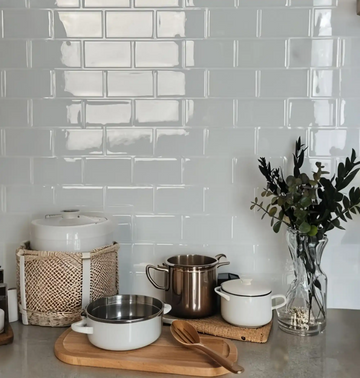
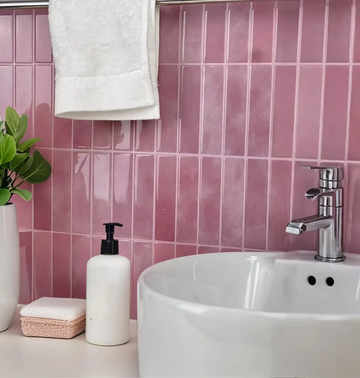
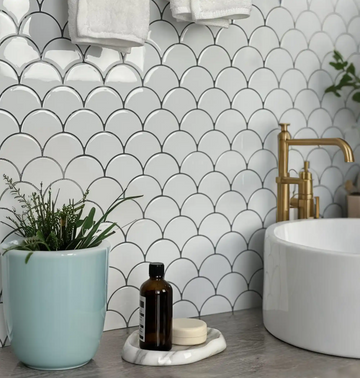
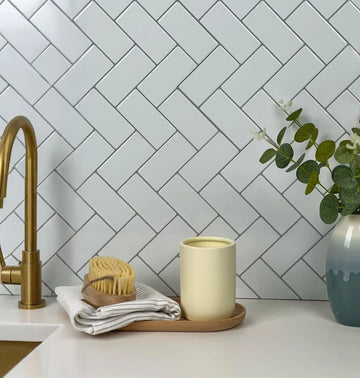


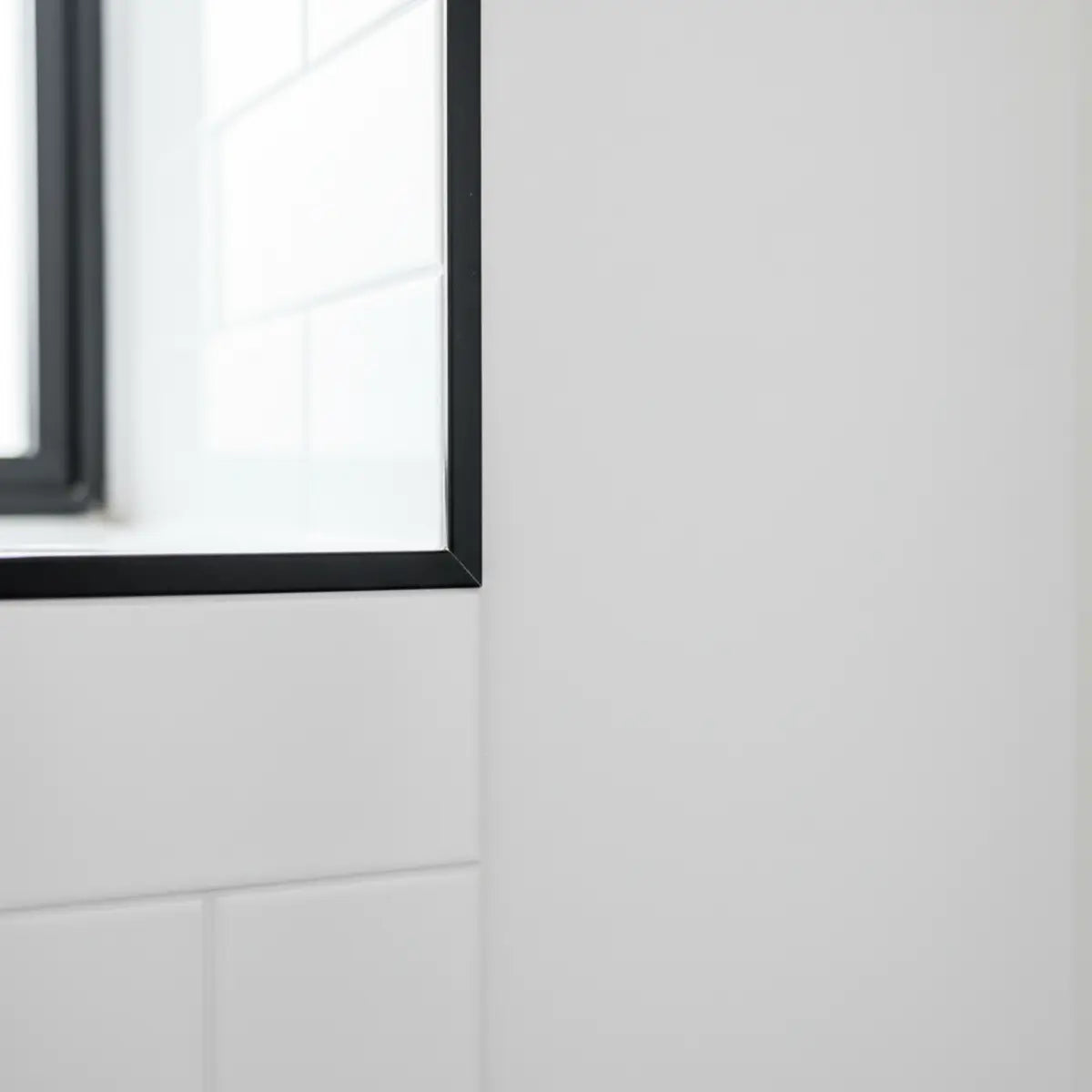


Laisser un commentaire
Ce site est protégé par hCaptcha, et la Politique de confidentialité et les Conditions de service de hCaptcha s’appliquent.